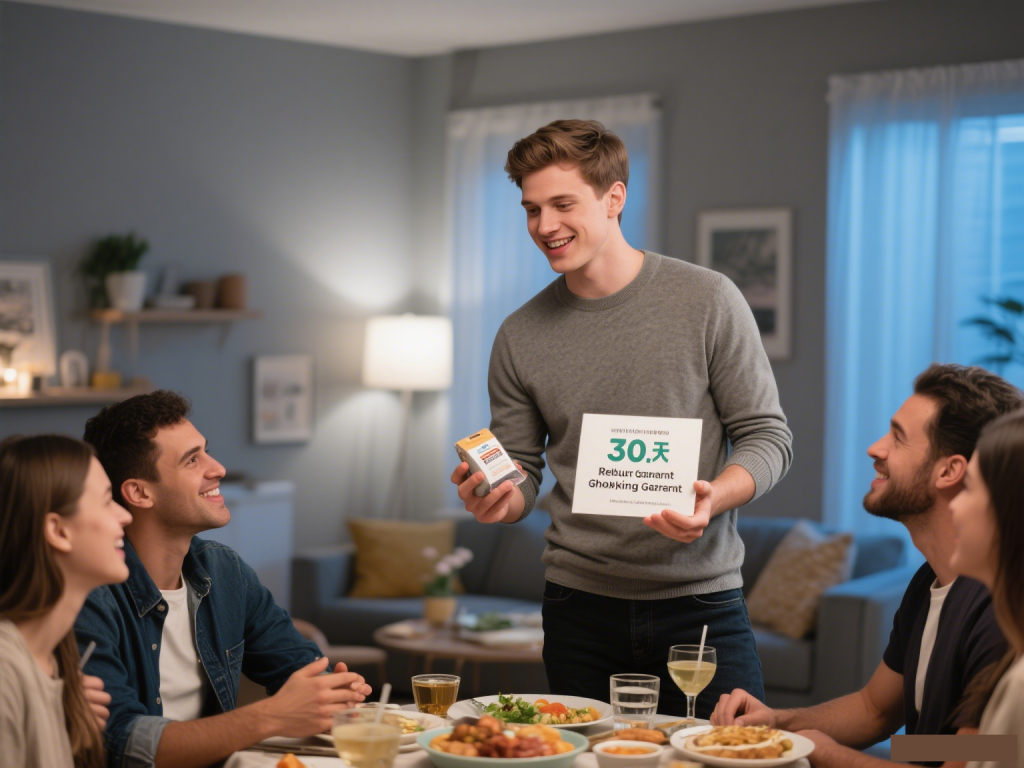
The Ultimate Guide to 30-Day Money-Back Guarantees: How to Shop Smarter & Avoid Traps
Hi, I’m Erick—your go-to coupon and savings expert here at CouponMega. Over the past 7 years, I’ve helped thousands of shoppers save big, but one question I get all the time is: “Can I really trust that ‘30-day money-back guarantee’?”
Spoiler: Yes… if you know how to use it. But I’ve also seen too many people leave money on the table because they missed fine print or misunderstood the rules. Today, I’m breaking down everything you need to know—from how these guarantees work to real stories of shoppers who won (and lost) big, plus pro tips to make sure you always come out ahead.

What Is a 30-Day Money-Back Guarantee, Anyway?
Let’s start simple: A 30-day money-back guarantee is a promise from a brand: “If you don’t love our product, return it within 30 days, and we’ll refund your money.” Sounds straightforward, right? But here’s the kicker: Not all guarantees are created equal.
I once worked with a reader, Sarah, who bought a “30-day guaranteed” blender from a small online store. She hated it, shipped it back on day 28… and got a rejection email saying, “Sorry, returns must be postmarked by day 25.” Ouch. That’s why understanding the details matters more than the marketing hype.
Why Do Brands Offer These Guarantees? (Spoiler: It’s Not Just Kindness)
You might think brands offer 30-day guarantees because they’re confident in their products—and that’s part of it! But there’s a business angle, too.
According to a 2024 study by the National Retail Federation (NRF), retailers with clear 30-day return policies see 22% higher conversion rates than those without. Why? Shoppers feel safer taking a risk on a new product if they know they can get their cash back.
Take Zappos, for example. Their famous 365-day return policy (yes, a year!) isn’t just generosity—it’s why they’re a leader in online shoe sales. Customers trust them, so they buy more. For smaller brands, a 30-day guarantee is a low-cost way to build that same trust.
How to Use a 30-Day Guarantee to Your Advantage (5 Pro Steps)
I’ve refined this process over years of testing—follow these steps, and you’ll never get stuck with a dud again:
1. Read the Fine Print Before You Buy
This is non-negotiable. I once helped a friend, Mike, return a “30-day guaranteed” laptop. He assumed “money-back” meant a full refund… but the policy said “store credit only.” Oops.
Look for these key details:
- Refund type: Cash? Store credit? Gift card?
- Return window: Is it 30 days from purchase or delivery? (Big difference if shipping takes a week!)
- Condition: Must the item be unopened? Used but undamaged?
- Fees: Will you pay return shipping? Restocking fees? (Some brands charge 15%—yikes.)
Pro tip: Screenshot the policy page before buying. I keep a folder on my phone labeled “Return Policies” for this exact reason.
2. Test the Product ASAP
Don’t let that new gadget collect dust! I once waited 28 days to try a skincare set… and hated it. By the time I shipped it back, it arrived on day 31, and the brand denied my refund.
Rule of thumb: Start testing within 7 days of delivery. That gives you 23 days to decide, package it up, and ship it back—plenty of buffer for delays.
3. Keep Every Receipt & Tracking Number
Sarah (remember her blender fail?) learned this the hard way. She threw away her order confirmation email, and when the brand asked for a receipt, she had nothing. No receipt = no refund.
Save:
- Order confirmations (email them to yourself, or use a tool like Google Keep)
- Shipping labels and tracking numbers (I use the USPS app to save delivery confirmations)
- Product tags, boxes, and original packaging (some brands refuse returns without them!)
4. Follow the Return Process to a T
Brands are picky about how you send items back. Last year, I helped a reader return a jacket to Nordstrom. She just dropped it in the mail with a note… but Nordstrom requires using their pre-paid label and filling out a return form. Her refund took 3 weeks longer than it should have.
Check if the brand:
- Requires a return authorization (RA) number (most do!)
- Has a preferred shipping carrier (e.g., “UPS only”)
- Needs a reason for return (some use this to deny refunds—stick to “didn’t meet expectations” instead of “defective” unless it truly is)
5. Follow Up (Politely!) If You Hit a Snag
If your refund is delayed or denied, don’t panic—politely escalate. I once had a $150 refund stuck for 6 weeks. I emailed customer service, then asked to speak to a supervisor, and mentioned, “I love your brand, but this experience is making me hesitant to shop here again.” They processed it that day.
Pro tip: Reference the policy you saved earlier. Say, “Per your 30-day guarantee (screenshot attached), I returned the item on [date]—can you help me track my refund?”

Real Stories: When Guarantees Work (and When They Don’t)
Let’s get real with two case studies from my files—one win, one fail—to show you what to avoid.
Success Story: Maria’s $200 Fitness Tracker Refund
Maria bought a fitness tracker online, lured by the “30-day no-questions-asked guarantee.” After 2 weeks, the battery died every 4 hours—way worse than advertised.
She:
- Checked the policy (30 days from delivery, full refund, free return shipping)
- Tested it immediately (day 3 of delivery)
- Requested an RA number (day 14)
- Shipped it back with tracking (day 16, arrived day 18)
- Followed up with customer service (day 25, when refund hadn’t hit her card)
Result? Full $200 refund in 3 days. She used the cash to buy a better tracker—with a 30-day guarantee, of course.
Fail Story: Tom’s “Lifetime” Guarantee Disaster
Tom bought a “30-day money-back, lifetime warranty” toolset. He used it once, and the handle broke. He waited 45 days to return it, thinking “lifetime warranty” meant he had time.
Problem? The 30-day money-back window had passed, and the “lifetime warranty” only covered manufacturing defects—not user error (he’d overtightened the handle).
Result? No refund, no replacement. He wasted $80.
3 Common Myths About 30-Day Guarantees (Busted!)
Myth 1: “All 30-day guarantees are ‘no questions asked.’”
Nope. Only 42% of brands offer truly “no questions asked” policies, per a 2024 Consumer Reports survey. Many will grill you on why you’re returning, or deny refunds for “damage from misuse.”
Myth 2: “I can return opened/used items.”
Some brands (like Amazon Basics) allow opened returns, but others (luxury retailers, electronics brands) don’t. Always check the “condition” clause!
Myth 3: “The clock starts when I buy it.”
Most brands start the 30 days when the item delivers, not when you order it. But a few (looking at you, fast-fashion sites) start at purchase. Always confirm!

Final Tips: Make the Most of Every Guarantee
- Stack with coupons: Use a CouponMega discount code and a 30-day guarantee for double savings. If you return, you’ll get refunded the discounted price—still a win!
- Check brand reputations: Use sites like Trustpilot to see if other shoppers actually got refunds. A brand with 1-star return reviews? Skip it.
- Set calendar reminders: Mark day 20 on your calendar as “return deadline alert.” I use Google Calendar—no more “oops, I missed the window” moments.
At the end of the day, a 30-day money-back guarantee is a superpower—if you use it right. Follow these steps, stay organized, and you’ll shop with confidence, knowing you’re never stuck with a product you don’t love.
Have a refund success (or horror) story? Drop it in the comments—I’d love to hear it! And if you want more tips on decoding retailer policies, check out our guide to How to Read Return Policies Like a Pro (spoiler: it’s saved readers over $10k in lost refunds!).
Happy shopping, and here’s to smarter, stress-free returns!
— Erick, CouponMega Savings Expert
P.S. Need help finding brands with rock-solid 30-day guarantees? Head to our Brand Spotlights page—we’ve vetted the best ones!


